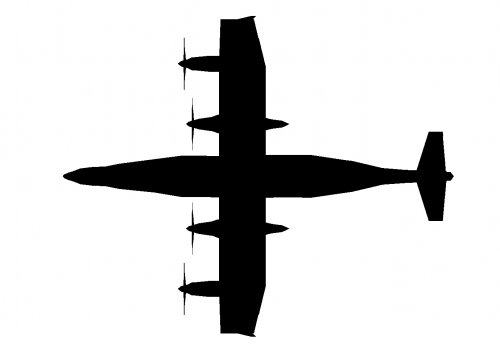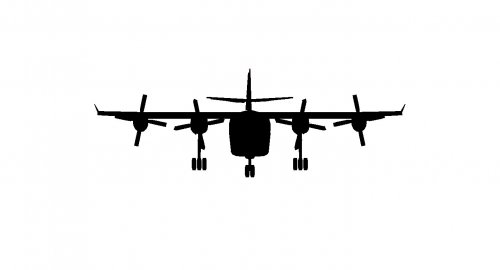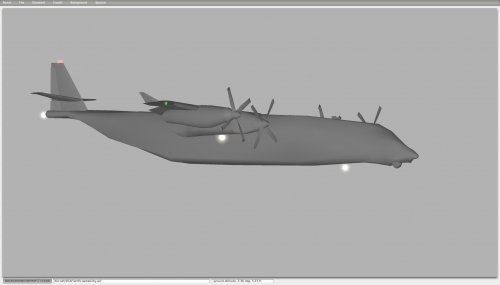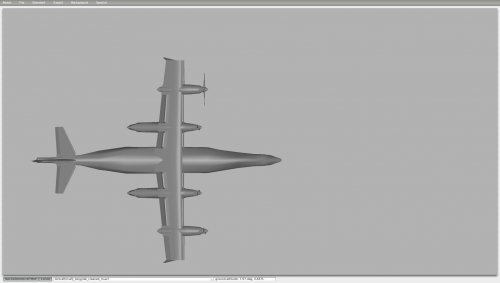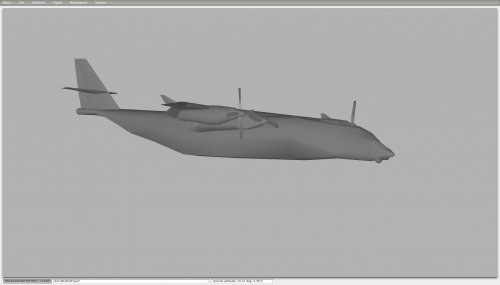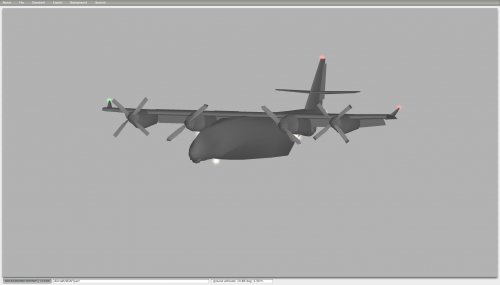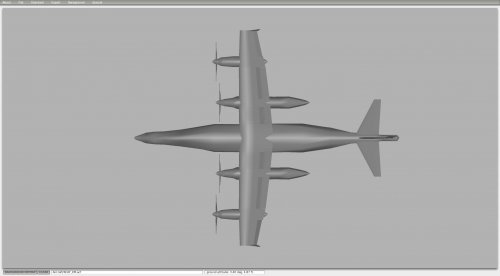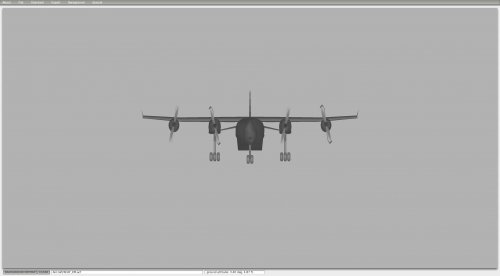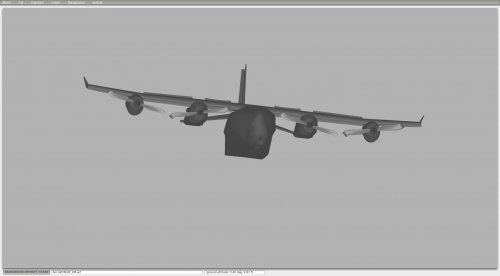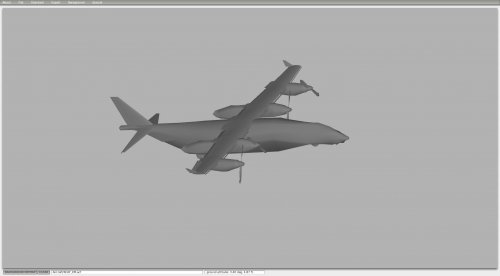Avimimus
ACCESS: Top Secret
- Joined
- 15 December 2007
- Messages
- 2,256
- Reaction score
- 540
I've been working on a design for a while - carefully checking different possibilities (the design currently has over 70 iterations).
It is closest in performance to a half-sized Dash-7 (i.e. de Havilland Canada DHC-7). It is half the weight, has the same weight/payload ratio, is slightly faster and has the same stall speed. The most unusual feature is that it is designed around a pure-piston layout using TRE750A (developed as a competitor to the PT-6 turboprop). This gives it an exceptional range for its class.
The design uses a high cord wing and propwash from the four props to allow very short take-off and landing runs (<300 metres) while keeping wingspan short enough for small strips (15 metres), efficient cruise, and a wing loading high enough for all-weather flying.
The challenge is the wing
Wing optimisation is never easy - especially without an aerospace engineering degree.
Current wing specs:
- NACA2412 airfoil.
- Incidence 1.2 degrees (decreases to 1.0 degrees for the outer wing), dihedral is minimised.
- 15 metre wingsapn, 2.25 metre cord (For the outer outer 2.3 metres of the wing the cord reduces to 0.7 metres). This yields and Aspect ratio of ~6.4, with a 23.2 sq.m. area, and 425.6 kg / sq. m. wing loading.
- Double slotted flaps with 1/4 ratio to wing cord, and limited to 40 degrees of deflection.
I could do with advice on:
- Whether to change the airfoil shape
- Whether to aim for optimising the cruising speed when powered with two engines (1000 hp combined) or four engines (2000 hp combined). Optimising the cruising speed for two engines allows extreme endurance (>20) configurations to be developed out of the airframe. However, it may undermine performance in the normal full powered configuration.
- Whether to abandon the 15 metre wingspan limit (thus preventing emergency landings on 1A class airstrips). It is tempting to keep a short wingspan, because this allows deployment closer to the area of operations. However, it means a lower aspect-ratio wing and at least some reduction in cruise efficiency.
- Whether to try and improve landing speeds (currently 130 km/h, higher without engine power as it uses propwash to increase the lift of the wing)! Without flaps the landing speed is 190 km/h, which is fine for most airports, but not ideal for a bush-plane.
Does anyone have advice - or know a good place where aeronautical engineers like to hang out online?
It is closest in performance to a half-sized Dash-7 (i.e. de Havilland Canada DHC-7). It is half the weight, has the same weight/payload ratio, is slightly faster and has the same stall speed. The most unusual feature is that it is designed around a pure-piston layout using TRE750A (developed as a competitor to the PT-6 turboprop). This gives it an exceptional range for its class.
The design uses a high cord wing and propwash from the four props to allow very short take-off and landing runs (<300 metres) while keeping wingspan short enough for small strips (15 metres), efficient cruise, and a wing loading high enough for all-weather flying.
The challenge is the wing
Wing optimisation is never easy - especially without an aerospace engineering degree.
Current wing specs:
- NACA2412 airfoil.
- Incidence 1.2 degrees (decreases to 1.0 degrees for the outer wing), dihedral is minimised.
- 15 metre wingsapn, 2.25 metre cord (For the outer outer 2.3 metres of the wing the cord reduces to 0.7 metres). This yields and Aspect ratio of ~6.4, with a 23.2 sq.m. area, and 425.6 kg / sq. m. wing loading.
- Double slotted flaps with 1/4 ratio to wing cord, and limited to 40 degrees of deflection.
I could do with advice on:
- Whether to change the airfoil shape
- Whether to aim for optimising the cruising speed when powered with two engines (1000 hp combined) or four engines (2000 hp combined). Optimising the cruising speed for two engines allows extreme endurance (>20) configurations to be developed out of the airframe. However, it may undermine performance in the normal full powered configuration.
- Whether to abandon the 15 metre wingspan limit (thus preventing emergency landings on 1A class airstrips). It is tempting to keep a short wingspan, because this allows deployment closer to the area of operations. However, it means a lower aspect-ratio wing and at least some reduction in cruise efficiency.
- Whether to try and improve landing speeds (currently 130 km/h, higher without engine power as it uses propwash to increase the lift of the wing)! Without flaps the landing speed is 190 km/h, which is fine for most airports, but not ideal for a bush-plane.
Does anyone have advice - or know a good place where aeronautical engineers like to hang out online?

